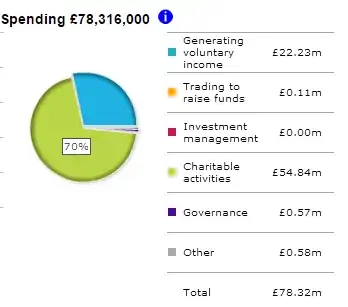I have heard claims from several people in relation to the occasional donation my wife or I make: that some charities have so much waste in their organization, or use so much money to market their charity work in order to get donations, that only x% of the donated money goes to the advertised cause, where x% varies from 10% to 50%.
I thought I might get some good results by Googling, but wasn't too successful: I seem to encounter specific numbers only in un-cited sources, like this one which is where I got the UNICEF/14% claim from.
Only pennies from the actual donations go to the UNICEF cause (less than $0.14 per dollar of income)
On the one hand, a charity might need to pay their employees at least something, but on the other hand requiring lots of employees to do the same work as another charity can do with a third of the cost is certainly a waste of the donated money.
Have there been proper studies of how much of the money donated to UNICEF in particular (since it is claimed to be the worst offender) is used wastefully, in the sense that the same charity work could actually be done without spending that money?
